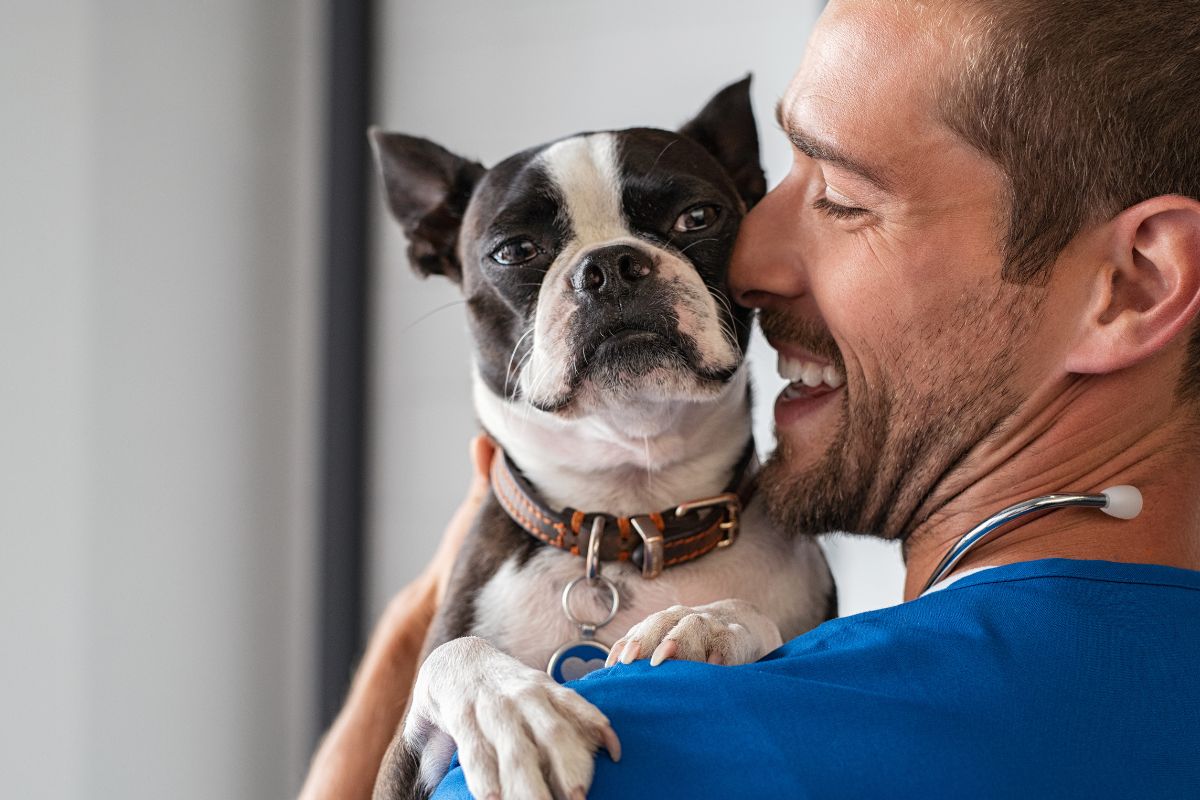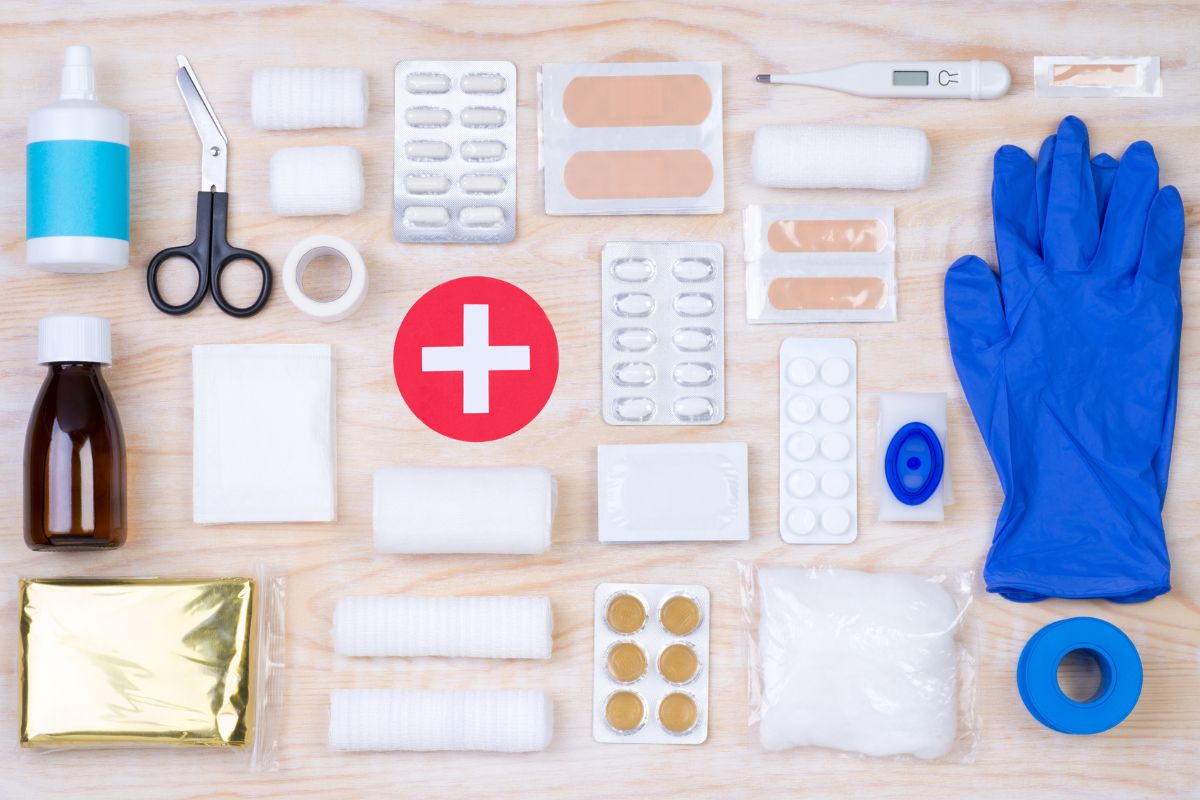For many of us, our dogs are the center of our universe. They’re just like human members of the family, with their own personalities to match. But, just like with humans, they can get themselves into sticky situations that might need medical care. These emergencies can happen at any time and for any reason, so it’s important to act quickly.
But don’t worry! This first aid guide covers everything you need to know to master basic first aid. We’ll teach you how to recognize the signs of common emergencies and what to do in a crisis.

Mastering Pet First Aid: Why It’s So Important
Although most of us don’t want to think about it, being prepared for a pet emergency might be the difference between life and death. However, a huge percentage of us wouldn’t know what to do if our pet ended up seriously hurt. A survey has revealed that only two percent of us would know what to do in a pet emergency.
A lot of the time, pet emergencies have nothing to do with us or our pets. Instead, they come at the expense of careless other people. MORI found that 21% of drivers have knocked a cat or dog down while driving in their car. This works out as one in five drivers and around 6.3 million people. What’s more, a staggering quarter of those confessed to driving off without checking to see if the animal they hit was okay.
But there’s actually a lot you can do to help your pet in emergency situations. In fact, the American Animal Hospital Association found that one in four pets would survive even if only one pet first aid technique was applied before you could get them to an emergency vet.
Pet Emergencies and What You Can Do About Them
Heatstroke
Heatstroke in dogs can come on quickly and requires immediate attention. Some common signs include panting, difficulty breathing, excessive drooling, increased temperature, reddened gums, rapid heart rate, and collapsing.
If you think your pet may be suffering from heatstroke, call your vet’s emergency line immediately for advice. Even if you manage to cool them down, they still may need veterinary care.
In the meantime, move your pet away from any heat sources. If they’re outside, get them in the shade and open windows to allow air to circulate. Lay a damp towel over your pet’s body and apply cool water to their paws and ear flaps. It’s important to make sure the water is cool and not cold!
Shock
Symptoms of shock include a weak pulse, shallow breathing, and dazed eyes. Your pet may even collapse.
If your pet goes into shock, they’ll need to see a vet immediately. When you’re transporting them, make sure their head is level with the rest of the body. If your dog is in pain, they may not understand what’s happening and lash out. Use a towel, blanket, or muzzle to prevent biting and keep you safe, too!

Choking
Signs of choking include difficulty breathing, excessive pawing at the mouth, choking sounds, and blue lips or tongue.
If you suspect your pet might be choking, open their mouth. If you can see an object there and you can reach it, gently attempt to remove it without pushing it further down.
If you can’t see anything, can’t reach, or if your pet collapses, apply firm, quick pressure to their rib cage or strike it with the palm of your hand to dislodge the object. Take your pet to the vet immediately if the object doesn't dislodge.
Even if you do manage to dislodge the object and your pet seems fine, we still recommend a visit to the vet to make sure everything’s okay.
Poisoning
Poisoning symptoms are extremely common in dogs. Look for signs such as vomiting, diarrhea, unusual behavior, loss of appetite, pale gums, seizures, and lethargy.
Suspected poisoning is an emergency. If you think your pet has been poisoned, get them to the vet immediately. If you know what they’ve eaten or how much, make sure to bring that along with you, as it will help the vet administer quick care.
Check out this article for a list of foods that are toxic to your dog.
Bleeding
If your pet is bleeding, press a clean towel over the wound firmly. Wait at least three minutes and then check the wound. Apply a bandage and keep as much pressure on the area as possible, loosening every 15-20 minutes for 20 seconds.
Take your pet to the vet immediately.
Seizures
During a seizure, a pet may seem stressed. Symptoms include shaking, itching, trembling, involuntary urination, and foaming at the mouth.
If you think your pet may be having a seizure, keep them away from objects that might cause injury and make them as comfortable as possible. Once the seizure has passed, contact your vet for further guidance.

Burns
In the event of any type of burn, whether chemical or thermal, flush the affected area with cool water for at least 20 minutes. If your pet has a chemical burn, flush the substance away from their eyes. Your pet will likely be in a lot of pain and very stressed, so you may need to muzzle them to stop them from snapping at you.
Do not apply any burn creams or ice. Take your pet to the vet, as they will need immediate treatment.
Breathing Emergencies
If your pet isn't breathing, check for a heartbeat. Then, clear the airway by gently opening your pet’s mouth and pulling the tongue forward to look for throat blockages. Close the mouth and breathe into your pet’s nose until their chest expands. Repeat this every five seconds.
If your pet doesn’t have a heartbeat, perform compressions (100-120 per minute). Alternate every 30 compressions with two breaths. Keep doing this until you feel a heartbeat or reach a vet.
First Aid Tips For Pets: Frequently Asked Questions
How Do You Perform First Aid on a Dog?
First aid for dogs is more or less the same as using first aid for humans. First aid for a pet means you address injuries or illnesses until professional veterinary care can be obtained.
Here are a few tips to keep in mind when performing any type of first aid on your pet:
- Keep calm! It’s easy to panic when your beloved pet needs emergency treatment, but it’s important to keep a cool head, as this will help you administer first aid safely.
- Make sure both you and the dog are safe from any further harm. That means extinguishing fires, removing harmful objects, or even moving your pet to a safer location (depending on the injury.)
- Check if the dog is conscious and breathing.
- Contact your vet or an emergency pet clinic immediately for advice.
- Depending on the situation, apply the appropriate first aid measures, such as controlling bleeding with pressure, cooling down a dog suffering from heatstroke, or performing CPR if the dog isn’t breathing and has no heartbeat.
What Are Five Basic Tips for Handling an Injured Pet?
- Approach your pet calmly – It’s important to avoid additional stress or aggression.
- Muzzle if necessary – If your pet is in pain, there may be a risk of biting or snapping. If you don’t have a muzzle, use soft fabric to cover your pet’s mouth.
- Move them carefully – If you must move your pet, do so gently to avoid worsening any injuries. Use a makeshift stretcher for severely injured pets.
- Assess the situation – Assess the nature of the injury or illness. This will help you give your vet accurate infomation that will help them save your pet more quickly.
- Follow advice – Always follow the advice given by your vet over the phone while you prepare to transport your pet to the clinic or hospital.

What Should Be in a Pet First Aid Kit?
Here are a few basic things you should include in your pet's first aid kit:
- Gauze and bandages
- Adhesive tape
- Antiseptic wipes
- Digital thermometer
- Tweezers and scissors:
- Saline solution
- Disposable gloves
- Emergency blanket
- Muzzle
- Flashlight
- Contact information for your vet and nearest emergency animal hospital
Can You Use Human First Aid on a Dog?
Many first aid principles are similar between humans and dogs. However, there are important differences in the specifics of care and certain treatments. While items like bandages, saline solution, and antiseptic wipes can be used on both humans and dogs, medication and dosage should be specifically tailored to animals. Human medications can be harmful (or even fatal) to dogs, so never administer them unless your vet tells you to.
Wrapping Up
Our pets are our family members, and it’s hard to imagine them injured and in pain. However, as difficult as it is to think about, by following the guidance and tips above, your intervention may mean the difference between life and death.
References
Thousands Of Cats And Dogs Victims Of Hit And Run Drivers Each Year
Survey finds just two percent are prepared for a pet’s illness or injury

